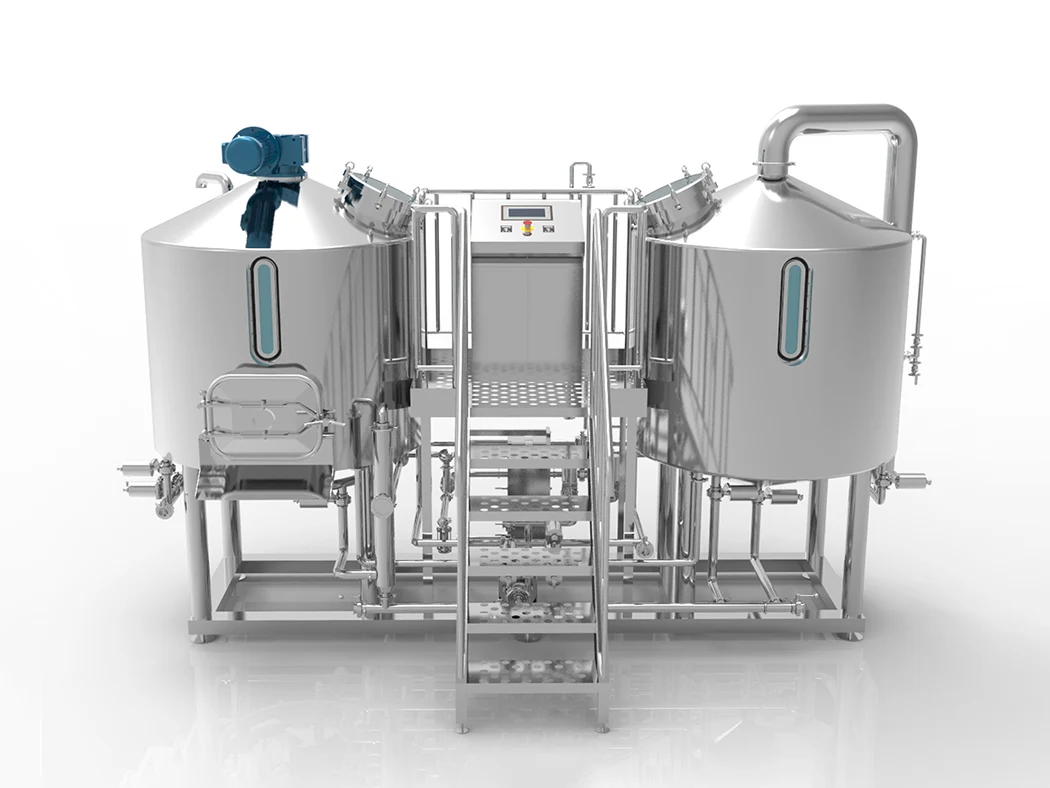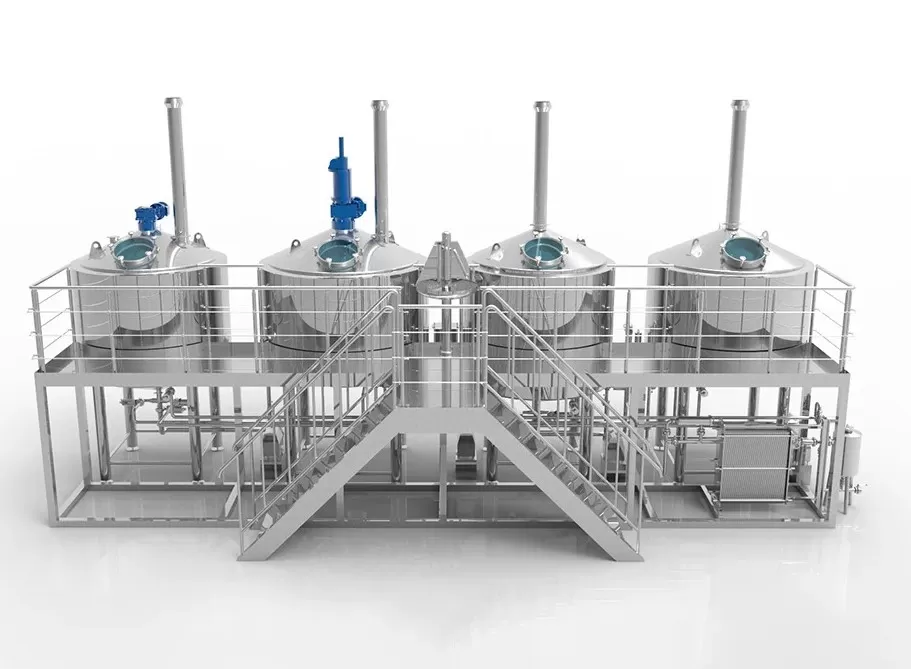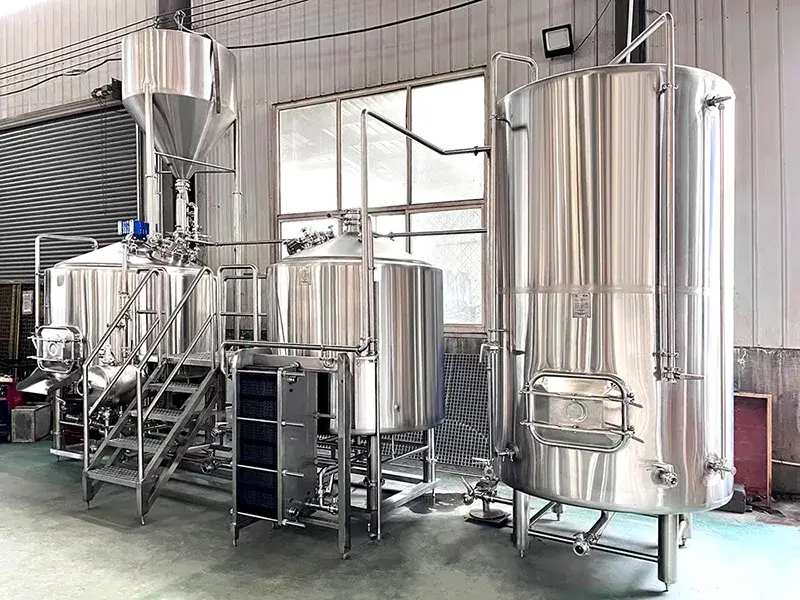When timelines slip and off-flavors sneak in, profit drops. The cure is a smart sistema that guides the team from hot side to cellar with calm, repeatable steps—so you cerveza more, spill less, and sleep better.
Commercial brewing equipment is the coordinated set of vessels, utilities, controls, and safety parts that turns mosto into finished cerveza at scale. A complete cervecería plus cold-side depósitos leads operators through milling, puré, boil, chilling, fermentador control, conditioning, and envasado. Choosing the right sistema improves eficacia y coherencia, reduces labor, and protects flavor.
1. What does a brewhouse include in a brewing system—and how does flow really work?
A modern cervecería anchors the hot side of your sistema de elaboración de cerveza. It typically combines a tina de macerado (or combo mash/lauter vessel), a whirlpool/pava, sanitary piping, one correctly sized bomba, and readable controls. On the cold side you add jacketed cellar depósitos (for a fermentador cónico o unitank), a brite tank, glycol service, and a intercambiador de calor matched to batch size. This single flow lets new staff learn fast and keeps veterans moving smoothly.
We start with room-first planning: utilities, drains, vent paths, slopes, and clear walk zones. Then we ingeniero line routing and reliefs so valves are reachable and gauges face the operator. This is practical diseño, not theory. You get fewer backtracks, tighter steps, and a calmer día de la cerveza—the kind of professional brewing floor that supports growth.
Integrated flow (embedded table)
| Paso | Core making equipment | Why it matters |
| Fresado | Molino de grano (two-rodillo con gap adjustment) | Predictable extract; fewer stuck beds |
| Hot side | Mash/lauter vessel, whirlpool/pava | Clear wort; stable evaporation |
| Chill | Sized intercambiador de calor; O₂-safe path | Fast pitch; aroma protection |
| Cellar | Enchaquetado fermentador o unitank, brite | Temp control; shorter cycles |
| Acabado | CO₂-safe envasado lines | Shelf life; repeatable fills |
Field note: good brewhouse ergonomics and fewer menu screens add real sencillez to training and reduce errors under pressure.
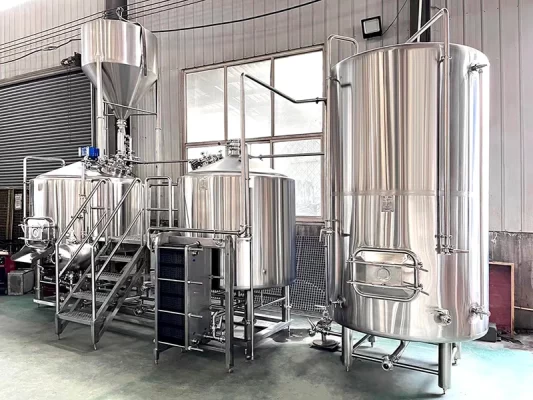
2. 3.5 bbl vs 5 bbl: which nano brewery capacity fits your plan to brew and sell?
Sizing decides labor hours, cooler load, and turnaround. In the nano range, the classic debate is 3.5 bbl vs 5 bbl. Pick by your tap velocity, cooler width, and staffing.
Embedded comparison—use it during planning
| Planning lens | 3.5 bbl | 5 bbl |
| Approx pints per turn | 1,085 | 1,550 |
| Typical weekly turns (1 operator) | 3 | 2 |
| Cold-side pairing | 3–4 cellar tanks | 3 tanks + larger brite |
| Space pressure | Baja | Más alto |
| Lo mejor para | pilots, small rooms | taproom plus light distro |
Actionable tips:
- Balance hot and cold. If the cellar queues, add capacityin a depósito before you upsize burners.
- Forecast seasonality. For lager-heavy calendars, allocate conditioning time; for IPA sprints, add a parallel fermentador.
- Leave stubs. Spare ports today make next year’s add-ons painless and llave en mano.
3. Kettle, heating, and electric choices: get wort to boil without drama
Hot-side control is about energy delivery, not just horsepower. A steam jacket on a pava gives even calefacción and quick ramps. Eléctrico elements simplify install and work well in tight urban sites. Whichever you choose, insulate long runs to save energy and stabilize steps in the proceso de elaboración.
Heat path trade-offs (embedded table)
| Path | Puntos fuertes | Watch-outs |
| Camisa de vapor | Fast step ramps; uniform heat | Boiler, vent, maintenance |
| Eléctrico | Lower install complexity | Panel load; element cleaning |
Keep sparge calm and recirculation gentle. Clear hot breaks and a tidy whirlpool cone make later clarity easy. Good hot-side habits set up the cellar for victory.
4. Fermenter or unitank: how cold-side tanks shape beer, speed, and consistency
A cónico fermentador lets you crop yeast, dump sediment, and manage pressure for clean profiles. A single unitank can carbonate and serve, which trims transfer steps and oxygen risk. Right-sizing cold-side capacity to your draft calendar protects coherencia and reduces firefighting.
For crisp lagers or hop-forward craft styles, jacketed cellar gear and accurate probes matter. Add sample valves, racking arms, and PRVs at reachable height. The goal is a cellar that helps you cerveza, not one that makes people climb ladders and guess.
5. Pro brewing controls that help people win: clean CIP paths, one pump, real simplicity
En pro work, schedules live or die on cleaning. Full-coverage cip spray balls, drain angles, and correct return heights turn hours into minutes. A single dedicated cellar bomba with the right impeller protects delicate hop matter while moving caustic confidently. Standardize gaskets and fittings so parts interchange across skids; label shelves for small parts and PRV springs.
Embedded maintenance list to print
- Verify spray coverage quarterly (riboflavin test or equivalent).
- Replace gasket kits on a calendar, not after a leak.
- Log sensor calibration.
- Shadow-board tools; stop hunting during caustic cycles.
That is pro brewing in practice: fewer steps, more uptime, less stress.

6. From grain mill to mash tun: efficient extraction without stuck beds
Su molino de grano is the quiet hero. A steady two-rodillo design with precise gap adjustment protects husks and supports eficiente runoff. Teach staff the feel and look of a correct crush; that fifteen-second check saves a fifteen-minute lauter rescue.
Mash calmly. Hold rests that match your recipe and water profile. Recirculate gently to build clarity without compaction. When your whirlpool stands consistently, the hot break tightens, and mosto heads to chill already in great shape.
7. Heat exchanger and brite tank: chill, condition, and package with confidence
A matched intercambiador de calor drops temperature fast, preserves foam-positive proteins, and protects hop oils. Downstream, a right-sized brite tank buffers serving so hot-side can keep turning. Add sanitary sample ports and clear sightlines at human height.
Mini table—cold-side checkpoints
| Consulte | Why | How often |
| Pitch temp match | Protects flavor | Cada lote |
| DO after chill | Caducidad | Weekly spot check |
| PRV & gauge test | Seguridad | Mensualmente |
When the path from chiller to envasado is short, sealed, and purged, quality stops depending on luck.
8. Accessories, fittings, and the shelf that saves your weekend
The right accessory and spare kit prevent downtime when the city is watching the game and your taproom is full. Keep clamps, gaskets, thermowells, PRV parts, tri-clamp tees, and hose ends in labeled bins. Standardize fitting sizes across lines so a single bin solves many problems.
We also recommend keeping a modest “swap box” of brewing supplies y brewery supplies for busy seasons. Clear labels and a shared location are simple moves that protect service.
9. All-in-one skid, operation routines, and packaging: what a customer actually gains
En all-in-one skid puts piping, pumps, controls, and safety in one frame. That cuts install time and mismatched parts. For new sites, a single HMI screen with calm alarms helps training. Simple operation SOPs live next to the gear, not in a drawer. Your customer gains a fast path to first pour and fewer surprises.
Start with kegs, then add a compact can line once draft stabilizes. Closed-transfer paths, CO₂ purges, and clean seams protect flavor at modest cost. That is how small teams cerveza more and apologize less.
10. Build quality and stainless details: engineer once, buy once, keep it durable
Real production needs real construction. We specify acero inoxidable where it counts and finishes that wipe down easily. Handles, gauges, and sight glasses land where people stand. That “high quality feel” becomes fewer slips and faster cycles. A polished fit and finish is also professional-grade in daily use—less snag, easier rinse, more uptime.
Behind the scenes, the parts supply chain matters. Spare kits on site, clear port maps, and drawings you can actually read keep service fast. That is how atención al cliente stays helpful when the unexpected happens.
Materials & feel (embedded mini table)
| Detail | Why operators care |
| True sanitary polish | Faster rinses; fewer harborage points |
| Numbered ports | Training time drops |
| Reachable handles | Safety and speed |
| Spares on shelf | Weekend saves |
Add one more practical note: a labeled “future” port for hop dosing or carb stones costs little now and saves a retrofit later.
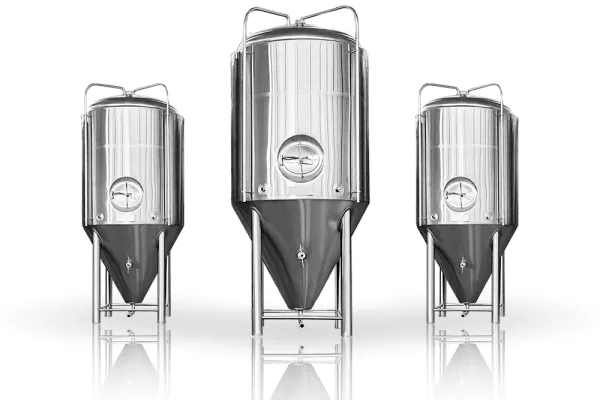
11. From plan to practice: a short case that shows efficient scaling
A taproom group needed more lager throughput without adding staff. We provided equipo de elaboración de cerveza profesional built as a compact, llave en mano skid—steam-jacket hot side, parallel cellar, and posted SOPs. Staff could cerveza on Monday, hit target gravity Thursday, and package Friday. Output rose, foaming complaints fell, and training time shrank. That single change improved eficacia and morale.
This is commercial beer brewing done simply: plan flow, protect oxygen paths, and keep the layout human. It’s also where a little personalizado thinking pays off—right ports, right reach, right height.
12. What to buy first—and what to buy once you’re running
Start with the core: a two- or three-vessel cervecería, jacketed cellar, and dependable controls. Add a second racking arm and a carb stone when cash allows. When you outgrow the pilot path, consider a small can line and upgraded cold storage. For the long term, buy durable frames, smooth welds, and ports you can reach. You’ll feel the alta calidad difference every cleanup.
And yes—this is equipo cervecero, but it’s also people equipment. Calm layouts help every cervecera move safely and quickly. That’s value you feel each turn you cerveza.
Preguntas frecuentes
What exactly is included when people say “brewhouse” for microbrewery equipment?
Typically: a mash/lauter vessel, a whirlpool/pava, sanitary piping, a hot-side bomba, and controls. Tie this to glycol, a cellar fermentador o unitank, a brite tank, and a matched intercambiador de calor. That’s your core sistema para brewing beer.
Is a conical worth it at the start?
Yes. A fermentador cónico allows yeast cropping and sediment dumps, trims time, and simplifies training. You get clearer product and a calmer cellar routine from week one.
Can an electric hot side keep up?
For small rooms and modest batch counts, electric works well. For heavy turns or step-heavy schedules, a steam jacket wins on ramp speed. We’ll match utilities to your site so your team can cerveza confidently.
Where do I begin on parts and spares?
Standardize gaskets and fittings, keep clamps and sensors on a marked shelf, and build a modest cache of brewing supplies y brewery supplies. Spares prevent stress when the taproom is full.
How do I keep cleaning time down?
Design for full cip coverage, label hoses and ports, and keep small parts sorted. Write and post SOPs; don’t rely on memory. Consistent steps protect quality.
Sources & further reading (operator-friendly)
- Brewers Association — Draught Quality and cellar hygiene guidance
- Master Brewers Association of the Americas — seminars on hot-side/cellar layouts
- Brew Your Own (BYO) — loud-and-clear how-tos on lautering, spray-ball coverage, whirlpool control
- ASBC Methods — measurement standards that support elaboración de cervezaQA
(We combine these with field data from installed lines and feedback from working teams in taprooms and production sites.)
Summary — the essentials to remember
- Build a clear sistemapath from mill to envasado; reduce backtracking and guesswork.
- Size hot and cold together; add cellar capacitybefore chasing BTUs.
- Use jacketed cellar gear and readable gauges; protect people and product.
- Standardize fittings; stock a shelf of small parts, sensors, and clamps.
- Keep cleaning calm: complete cipcoverage and a single dependable bomba.
- Favor stainlesstouchpoints and durable frames; buy once, clean fast.
- Post SOPs; simple routines raise output and protect coherencia.
As a manufacturer, we support installs, spares, and documentation so you cerveza more with less stress.
We build and support professional-grade lines for startups and growing groups. From pilot brewhouses to parallel cellars, our parts supply and documentation keep teams moving. If you want a calm launch and a scalable solución, we’re ready.

